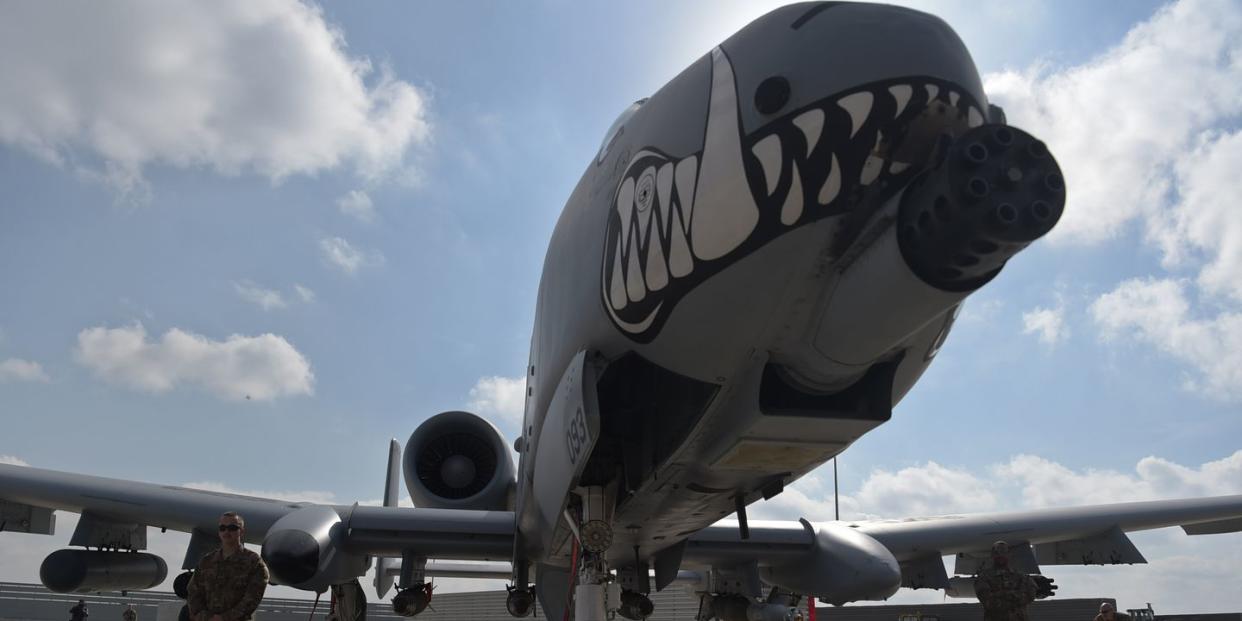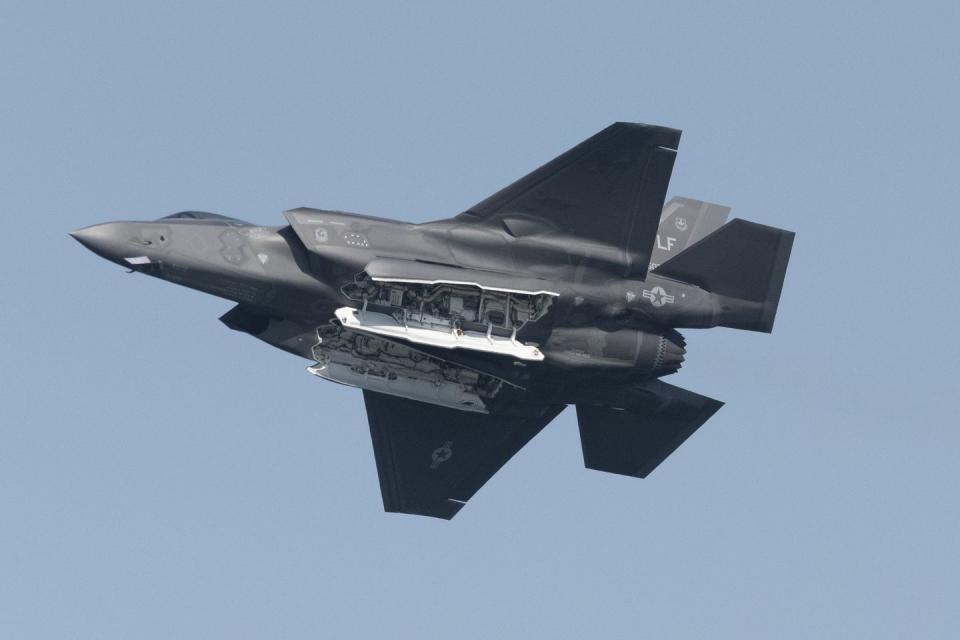The A-10 Warthog Will Fly Into the 2040s

The A-10 Warthog, which first entered service in the late 1970s, will keep flying in Air Force service until 2040—or later.
The A-10 will only be restricted to combat against enemies with little or no air defenses, ending the jet’s career as a tank killer.
The U.S. Air Force has decided to keep the A-10 “Warthog” close air support jet in service until 2040. The jet, designed to dominate Cold War battlefields, will still be flying 50 years after the collapse of the Soviet Union. That’s the good news. The bad news? The service is downgrading the jet’s mission, from one flying over tank columns on the ground to bombing bandits and insurgents in lightly defended airspace.
The Air Force, Air Force Magazine reports, plans to cut 44 jets from the A-10’s standing fleet of 281 aircraft. The remaining 237 jets will fly on in seven squadrons split among three active duty, three National Guard, and one reserve squadron, respectively. Retiring a portion of the fleet will enable the service to fund upgrades designed to keep the A-10 flying along much, much newer planes, and tap into the Air Force’s new generation of networking and communications systems, boosting the airplane’s overall usefulness on the digital battlefield of the future.

In addition to the A-10s, the Air Force plans to cut 29 aerial refueling tankers, 24 C-130H transport aircraft (the current version is the -J), 24 Global Hawks drones, and 17 B-1B Lancer bombers. All of the manned aircraft are older planes, particularly the aerial refueling tankers, some of which entered service in the 1950s. Older planes are typically more expensive to keep in service, as sourcing spares and the lifespan of key parts becomes an issue. By retiring older planes, the Air Force hopes to free up funds to buy and support new planes.
The A-10 is being kept on one condition, though: it is no longer designated to fly over heavily defended battlefields. The Air Force is convinced the aircraft, designed to unleash missiles, rockets, bombs, and its GAU-8/A 30-millimeter Gatling gun is no longer able to fly over “double digit” air defenses. These include the SA-11 “Buk” surface-to-air missile system, SA-15 “Tor” surface-to-missile system, SA-24 “Needle” shoulder-fired surface-to-air missile, and the truck-mounted SA-22 “Pantsir-1” missile system.
Instead, the Warthog is now relegated to supporting U.S. troops over “lightly contested or defended” air space. Think insurgents driving pickup trucks with machine guns bolted to the bed, plus a shoulder-fired surface-to-air missile or two. Think Afghanistan or Somalia—not Russia or China.

What will replace the A-10 in the skies over America’s “peer” adversaries? The F-35, of course.
In one respect that’s the correct decision—despite America’s fondness for the A-10, it would probably get shot down in droves by a competent enemy fielding modern air defense guns and missiles. The F-35 is faster and more responsive to the fast-moving ground battle, and its stealthy qualities make it less of a target. Its sensors and communications allow it to collect data on ground threats so the pilot can effectively counter them.
The problem with the F-35 in the close air support role is that it lacks armament. The A-10 Thunderbolt bristles with weapons, from the GAU-8/A Avenger 30-millimeter Gatling gun (with 1,174 rounds) to Maverick missiles, 70-millimeter rockets, and guided and unguided bombs. The F-35, on the other hand, is armed with the GAU-22 “Equalizer” 25-millimeter gun (with just 181 rounds) and can carry just two laser- or satellite-guided bombs in its internal payload bays. The F-35 can carry more bombs on wing mounted pylons, but doing so increases the jet’s visibility to enemy radars.
Still, the F-35 may not keep the close air support mission for long. The F-35A currently costs $45,000 an hour to fly, and the Air Force may decide that the mission should go toward a cheaper unmanned aircraft capable of flying missions over contested airspace. A better solution down the road might be large numbers of cheap but heavily armed drones, with the pilot of a manned aircraft planning drone strikes from a safe distance. The ideal aircraft for this mission? The A-10.
The Air Force’s decision is a mixed victory for fans of the A-10. The semi-mythical ideal of the A-10 as an invincible, titanium-armored valkyrie flying over legions of enemy tanks, flattening them like pancakes while avoiding volleys of enemy missiles, is over for good.
Still, the 1970s-era Warthog is flying far longer than anyone ever expected and may even get the last laugh over the F-35.
You Might Also Like

 Yahoo News
Yahoo News 
